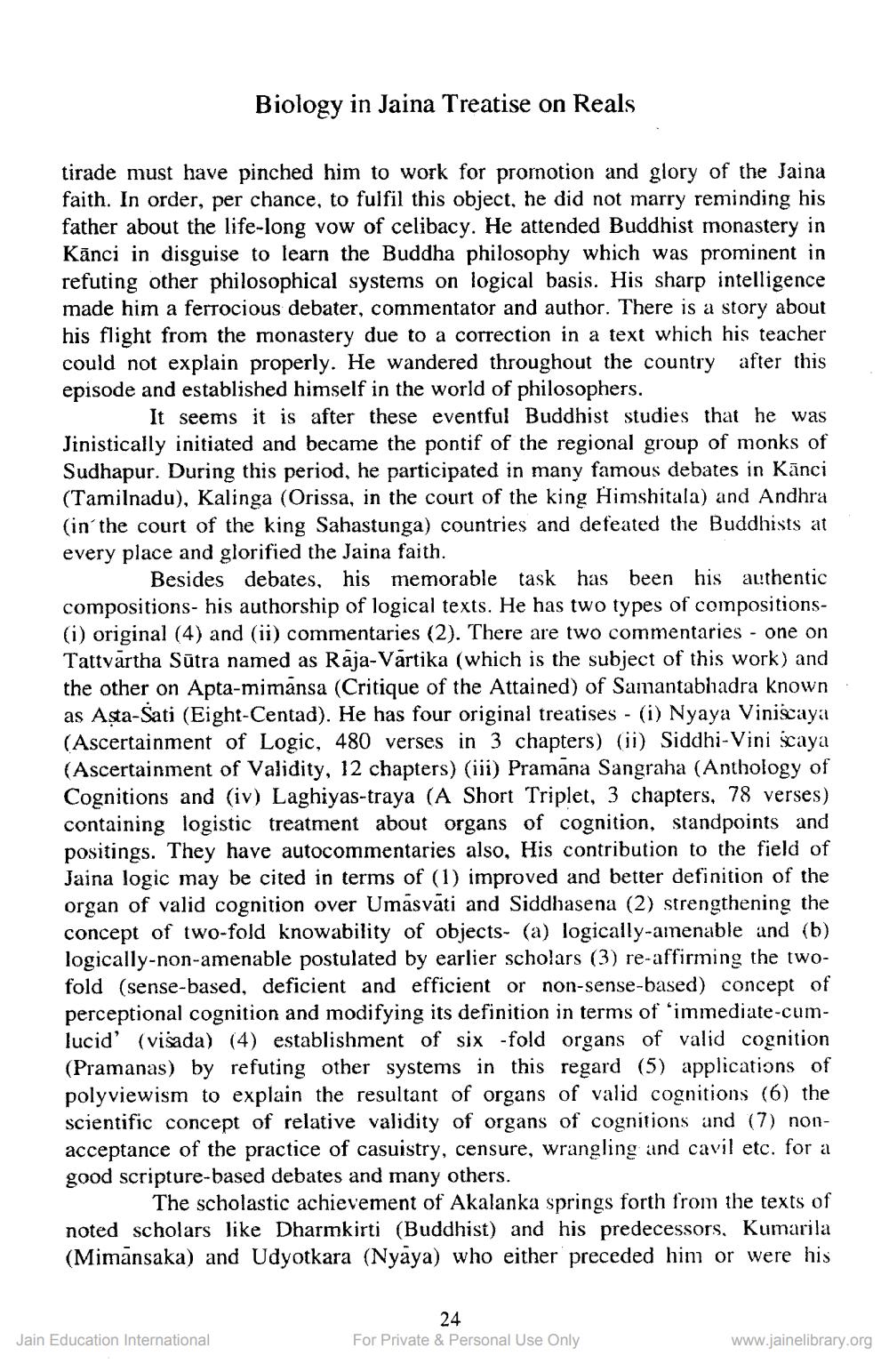________________
Biology in Jaina Treatise on Reals
tirade must have pinched him to work for promotion and glory of the Jaina faith. In order, per chance, to fulfil this object, he did not marry reminding his father about the life-long vow of celibacy. He attended Buddhist monastery in Kānci in disguise to learn the Buddha philosophy which was prominent in refuting other philosophical systems on logical basis. His sharp intelligence made him a ferrocious debater, commentator and author. There is a story about his flight from the monastery due to a correction in a text which his teacher could not explain properly. He wandered throughout the country after this episode and established himself in the world of philosophers.
It seems it is after these eventful Buddhist studies that he was Jinistically initiated and became the pontif of the regional group of monks of Sudhapur. During this period, he participated in many famous debates in Kānci (Tamilnadu), Kalinga (Orissa, in the court of the king Himshitala) and Andhra (in' the court of the king Sahastunga) countries and defeated the Buddhists at every place and glorified the Jaina faith.
Besides debates, his memorable task has been his authentic compositions- his authorship of logical texts. He has two types of compositions(i) original (4) and (11) commentaries (2). There are two commentaries - one on Tattvartha Sūtra named as Raja-Vārtika (which is the subject of this work) and the other on Apta-mimansa (Critique of the Attained) of Samantabhadra known as Asta-Sati (Eight-Centad). He has four original treatises - (i) Nyaya Viniscaya (Ascertainment of Logic, 480 verses in 3 chapters) (ii) Siddhi-Vini Scaya (Ascertainment of Validity, 12 chapters) (iii) Pramana Sangraha (Anthology of Cognitions and (iv) Laghiyas-traya (A Short Triplet, 3 chapters, 78 verses) containing logistic treatment about organs of cognition, standpoints and positings. They have autocommentaries also, His contribution to the field of Jaina logic may be cited in terms of (1) improved and better definition of the organ of valid cognition over Umäsväti and Siddhasena (2) strengthening the concept of two-fold knowability of objects- (a) logically-amenable and (b) logically-non-amenable postulated by earlier scholars (3) re-affirming the twofold (sense-based, deficient and efficient or non-sense-based) concept of perceptional cognition and modifying its definition in terms of 'immediate-cumlucid' (visada) (4) establishment of six -fold organs of valid cognition (Pramanas) by refuting other systems in this regard (5) applications of polyviewism to explain the resultant of organs of valid cognitions (6) the scientific concept of relative validity of organs of cognitions and (7) nonacceptance of the practice of casuistry, censure, wrangling and cavil etc. for a good scripture-based debates and many others.
The scholastic achievement of Akalanka springs forth from the texts of noted scholars like Dharmkirti (Buddhist) and his predecessors, Kumarila (Mimānsaka) and Udyotkara (Nyāya) who either preceded him or were his
24 For Private & Personal Use Only
Jain Education International
www.jainelibrary.org




